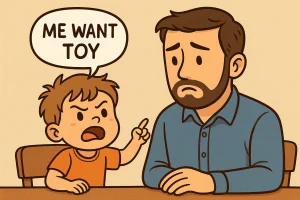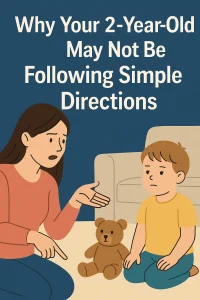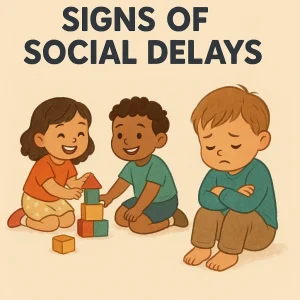Is It Apraxia or Autism? Find Out Now
Last Updated: August 20, 2024
As a parent, noticing speech delays in your child can be concerning. You might wonder whether these delays are due to Apraxia or Autism. Understanding the root cause is crucial because it guides you towards the right treatment and support for your child.
Speech delays can be puzzling and often lead to questions about what might be causing them. Is it a motor speech disorder like Childhood Apraxia of Speech (CAS) or a broader developmental condition like Autism Spectrum Disorder (ASD)? Each condition has its unique challenges and understanding which one your child might be experiencing is the first step towards effective intervention.
Childhood Apraxia of Speech (CAS) is a rare but significant motor speech disorder where the brain has trouble coordinating the muscle movements needed for speech. On the other hand, Autism Spectrum Disorder (ASD) is a complex developmental condition that affects social interaction, communication, and behavior. Differentiating between these two conditions can be tricky, but it’s essential for ensuring your child receives the right kind of help.
What is Childhood Apraxia of Speech (CAS)?
Childhood Apraxia of Speech (CAS) is a rare but serious motor speech disorder that affects a child’s ability to speak correctly. In CAS, the brain has trouble coordinating the complex movements required to form sounds into words. It’s not that the speech muscles are weak; instead, the issue lies in the brain’s ability to plan and sequence those movements.
Key Symptoms of Apraxia:
- Distortion of Sounds: Children with CAS often struggle to move their tongue, lips, and jaw in the right way to produce clear sounds. This leads to distorted speech that can be hard to understand.
- Inconsistencies in Sound Errors: One of the hallmark signs of CAS is inconsistency. A child might say a word perfectly one day but struggle with it the next. This variability can be confusing for both the child and the listener.
- Errors in Prosody: Prosody refers to the rhythm, stress, and intonation of speech. Children with CAS may have trouble using the correct stress and rhythm when speaking, making their speech sound unusual or “choppy.”
- Groping for Sounds: Children with CAS often have to try multiple times to get their mouth in the right position to produce a sound. This “groping” can be very noticeable and frustrating for the child.
What is Autism Spectrum Disorder (ASD)?
Autism Spectrum Disorder (ASD) is a complex developmental condition that affects how a person interacts with others, communicates, and behaves. ASD is called a “spectrum” disorder because it includes a wide range of symptoms and levels of impairment. It usually appears in the first three years of life and can affect each person differently.
Key Symptoms of Autism:
- Social Communication Impairments: Children with Autism often have difficulties with social interactions. They might struggle to make eye contact, understand social cues, or engage in typical back-and-forth conversations. This can make it challenging for them to build relationships with peers and family members.
- Repetitive Behaviors: Another hallmark of Autism is repetitive behaviors. This can include repeating the same actions, such as rocking back and forth, lining up toys, or sticking to a strict routine. Changes in their environment or routine can cause significant distress.
- Speech and Language Problems: Many children with Autism experience delays in speech and language development. They might have trouble forming words, using language to communicate, or understanding what others are saying. Some children with Autism might be non-verbal and rely on alternative methods of communication, such as sign language or picture boards.
Comparing Childhood Apraxia of Speech with Autism
Understanding the differences between Childhood Apraxia of Speech (CAS) and Autism Spectrum Disorder (ASD) is essential for accurate diagnosis and effective treatment. Although both conditions can affect speech and communication, they do so in distinct ways.
Main Differences Between CAS and ASD:
- Speech Coordination vs. Social Communication:
- Childhood Apraxia of Speech (CAS): CAS is primarily a motor speech disorder. It affects the brain’s ability to coordinate the muscle movements necessary for speech. Children with CAS know what they want to say but struggle to move their mouth correctly to articulate words.
- Autism Spectrum Disorder (ASD): ASD, on the other hand, primarily impacts social communication and behavior. Children with Autism might have difficulty understanding and using verbal and non-verbal communication cues, which can affect their ability to interact socially.
- Consistency vs. Variation in Speech Errors:
- CAS: A key characteristic of CAS is the inconsistency in speech errors. A child with CAS might pronounce the same word differently each time they attempt it. This inconsistency can make it challenging for them to be understood.
- ASD: Children with Autism may also exhibit speech errors, but these are often more consistent. Their speech might include repetitive phrases, echolalia (repeating what others say), or atypical vocalizations, but the pattern of these errors tends to be stable.
Explanation of How These Differences Affect Diagnosis and Treatment:
- Diagnosis:
- Diagnosing CAS involves detailed assessments by a speech-language pathologist who looks at the child’s ability to plan and produce speech sounds consistently.
- Diagnosing ASD typically involves a multi-disciplinary approach, including observations of social interactions, communication skills, and behavior patterns. It may involve developmental pediatricians, psychologists, and other specialists.
- The distinct nature of speech issues in CAS versus the broader social and communication challenges in ASD helps professionals determine the correct diagnosis.
- Treatment:
- CAS: Treatment for CAS often focuses on improving motor planning and coordination for speech. Techniques may include intensive speech therapy that focuses on practicing specific sounds and sequences of movements.
- ASD: Treatment for Autism often includes a combination of speech therapy, behavioral therapy, and social skills training. The goal is to enhance communication, social interaction, and adaptive skills.
Comparison of CAS and ASD Symptoms
| Symptom | Childhood Apraxia of Speech (CAS) | Autism Spectrum Disorder (ASD) |
|---|---|---|
| Speech Coordination | Difficulty with motor planning for speech. The brain struggles to coordinate the muscle movements needed for clear speech. | Often normal, but may have atypical speech patterns due to other factors like sensory issues or repetitive behaviors. |
| Consistency of Errors | Inconsistent speech errors. A child may pronounce the same word differently each time. | Consistent speech patterns. Speech errors, if present, tend to be the same each time. |
| Social Interaction | Typically unaffected. Children with CAS usually have normal social interaction skills. | Impaired social communication. Children with ASD may have difficulty with eye contact, understanding social cues, and engaging in typical social interactions. |
| Repetitive Behaviors | Not typically present. CAS primarily affects speech and does not usually involve repetitive behaviors. | Common. Children with ASD often engage in repetitive behaviors such as rocking, lining up toys, or repeating phrases. |
| Language Understanding | Generally good. Children with CAS often understand language at an age-appropriate level. | Can vary; often impaired. Children with ASD may have difficulty understanding language, which can affect their ability to follow instructions and engage in conversation. |
Know more: Autism vs. Down Syndrome: Understanding the Differences
How Apraxia and Autism Can Co-Occur
It’s not uncommon for children to be diagnosed with both Childhood Apraxia of Speech (CAS) and Autism Spectrum Disorder (ASD). Understanding the co-occurrence of these conditions can help parents and caregivers provide better support for their children.
Statistics and Studies Showing the Co-Occurrence of CAS and ASD:
Several studies have highlighted the prevalence of dual diagnoses of CAS and ASD. For instance:
- A study conducted by the Penn State Milton S. Hershey Medical Center found that about 64% of children initially diagnosed with Autism also had signs of Apraxia. Conversely, 36.8% of children diagnosed with Apraxia were also found to have Autism.
- Another study highlighted that around 23.3% of children assessed had both conditions, emphasizing the need for thorough evaluations when speech delays and communication difficulties are observed.
Implications of Having a Dual Diagnosis:
Having both CAS and ASD can complicate the diagnostic and treatment process, but understanding the implications can lead to more effective support strategies:
- Complex Assessment Process:
- Children with dual diagnoses often require comprehensive assessments from multiple specialists, including speech-language pathologists, developmental pediatricians, and psychologists. This ensures that both conditions are accurately identified and addressed.
- Customized Treatment Plans:
- Treatment for children with both CAS and ASD needs to be tailored to address the unique challenges posed by each condition. Speech therapy for CAS might focus on improving motor planning for speech, while interventions for ASD might include social skills training and behavioral therapy.
- Integrating these approaches can provide a holistic support system, improving overall communication and social interaction skills.
- Enhanced Early Intervention:
- Early and accurate identification of both conditions can lead to timely interventions, which are crucial for the child’s development. Early support can help mitigate the impact of speech and communication difficulties, allowing children to develop better language and social skills.
- Parental Guidance and Support:
- Parents of children with dual diagnoses might feel overwhelmed by the complexity of their child’s needs. Access to resources and support groups, such as those provided by the Wellness Hub, can be invaluable. These resources offer guidance, tips, and emotional support, helping parents navigate their child’s developmental journey.
Diagnosis and Evaluation
Accurate diagnosis of Childhood Apraxia of Speech (CAS) and Autism Spectrum Disorder (ASD) is crucial for ensuring that children receive the appropriate interventions and support. Here’s why it matters and who can help.
Importance of Accurate Diagnosis:
Identifying whether a child has CAS, ASD, or both can significantly impact their treatment plan and overall development. Early and precise diagnosis allows for tailored interventions that address the specific needs of the child, improving their communication, social skills, and quality of life.
Professionals Involved in the Evaluation:
- Speech-Language Pathologists (SLPs):
- SLPs are essential in diagnosing and treating CAS. They evaluate the child’s speech and language abilities, focusing on motor planning and coordination needed for speech production.
- They also assess the consistency of speech errors and the child’s ability to imitate sounds and words.
- Developmental Pediatricians:
- These specialists evaluate overall development, including social, emotional, and cognitive skills. They play a key role in diagnosing ASD by observing the child’s behavior and interactions over time.
- Developmental pediatricians can identify broader developmental issues that may accompany ASD or CAS.
- Occupational Therapists:
- Occupational therapists assess and support the development of fine and gross motor skills. They help address any motor planning issues related to CAS and can also assist with sensory integration challenges often seen in children with ASD.
- They work on improving the child’s ability to perform daily tasks, which can be affected by both CAS and ASD.
Overview of the Evaluation Process:
Accurate diagnosis of Childhood Apraxia of Speech (CAS) and Autism Spectrum Disorder (ASD) is crucial for ensuring that children receive the appropriate interventions and support. Here’s why it matters and who can help.
Importance of Accurate Diagnosis:
Identifying whether a child has CAS, ASD, or both can significantly impact their treatment plan and overall development. Early and precise diagnosis allows for tailored interventions that address the specific needs of the child, improving their communication, social skills, and quality of life.
Professionals Involved in the Evaluation:
- Speech-Language Pathologists (SLPs):
- SLPs are essential in diagnosing and treating CAS. They evaluate the child’s speech and language abilities, focusing on motor planning and coordination needed for speech production.
- They also assess the consistency of speech errors and the child’s ability to imitate sounds and words.
- Developmental Pediatricians:
- These specialists evaluate overall development, including social, emotional, and cognitive skills. They play a key role in diagnosing ASD by observing the child’s behavior and interactions over time.
- Developmental pediatricians can identify broader developmental issues that may accompany ASD or CAS.
- Occupational Therapists:
- Occupational therapists assess and support the development of fine and gross motor skills. They help address any motor planning issues related to CAS and can also assist with sensory integration challenges often seen in children with ASD.
- They work on improving the child’s ability to perform daily tasks, which can be affected by both CAS and ASD.
Overview of the Evaluation Process:
- Initial Consultation:
- The evaluation process typically begins with an initial consultation where parents discuss their concerns and the child’s developmental history with a specialist.
- Observations and parent interviews help provide a comprehensive picture of the child’s abilities and challenges.
- Formal Assessments:
- Formal assessments involve structured tests and observations to evaluate speech, language, social interactions, and motor skills.
- For CAS, SLPs may use specific tools and tasks to assess the child’s ability to produce speech sounds consistently and correctly.
- For ASD, developmental pediatricians and psychologists might use standardized diagnostic tools like the ADOS (Autism Diagnostic Observation Schedule).
- Multidisciplinary Approach:
- A multidisciplinary team approach ensures that all aspects of the child’s development are considered. Collaboration among SLPs, developmental pediatricians, occupational therapists, and other specialists is crucial.
- This team works together to create a comprehensive evaluation report, detailing the diagnosis and recommended interventions.
- Feedback and Planning:
- After the evaluations, the specialists will meet with the parents to discuss the findings. They provide a detailed explanation of the diagnosis and outline a tailored intervention plan.
- This plan may include speech therapy for CAS, behavioral therapy for ASD, and occupational therapy for motor and sensory issues.
- Ongoing Monitoring:
- Regular follow-ups and reassessments are important to monitor the child’s progress and adjust the treatment plan as needed. This ensures that the interventions remain effective and relevant as the child develops.
Professionals Involved in Diagnosis
| Professional | Role in Diagnosis |
|---|---|
| Speech-Language Pathologist (SLP) | Evaluates speech and language skills. SLPs focus on assessing the child’s ability to produce speech sounds correctly and consistently. They identify issues with motor planning for speech, diagnose speech disorders like CAS, and create personalized therapy plans to improve speech and communication skills. |
| Developmental Pediatrician | Assesses overall development. These specialists evaluate the child’s social, emotional, and cognitive skills to diagnose developmental disorders such as ASD. They conduct comprehensive assessments to understand the child’s developmental milestones and identify any delays or abnormalities. |
| Occupational Therapist (OT) | Evaluates motor skills and sensory integration. OTs assess the child’s fine and gross motor abilities, which are crucial for daily activities. They also address sensory processing issues that might affect the child’s behavior and learning. OTs create intervention plans to help children develop the skills needed for independence and participation in daily life. |
Why Early Diagnosis Matters
Early diagnosis of Childhood Apraxia of Speech (CAS) and Autism Spectrum Disorder (ASD) is crucial for several reasons. Identifying these conditions at an early stage allows for timely intervention, which can significantly improve a child’s developmental outcomes and overall quality of life.
Benefits of Early Identification and Intervention:
- Improved Communication Skills:
- Early diagnosis enables immediate intervention, which is essential for children with CAS and ASD. Speech therapy can help children with CAS develop better motor planning for speech, while behavioral and speech therapies can enhance communication skills in children with ASD.
- Enhanced Social Interaction:
- Children with ASD often struggle with social interactions. Early intervention programs can teach social skills and improve their ability to interact with peers and adults, leading to better social integration.
- Better Academic Performance:
- Addressing speech and language issues early can also benefit a child’s academic performance. Early support helps them develop the necessary language skills to understand and follow instructions, participate in classroom activities, and succeed academically.
- Reduction in Behavioral Issues:
- Early intervention can help reduce behavioral issues that often accompany ASD. By teaching coping strategies and communication skills, children can better express their needs and frustrations, leading to fewer behavioral problems.
- Parental Support and Education:
- Early diagnosis provides parents with the knowledge and resources they need to support their child effectively. This includes understanding the condition, learning how to communicate with their child, and knowing what types of interventions and therapies are most beneficial.
Encouragement for Parents to Seek Professional Evaluations Early:
As a parent, you know your child better than anyone. If you notice signs of speech delay or atypical behavior, don’t hesitate to seek a professional evaluation. Early identification is key to providing your child with the support they need to thrive.
- Trust Your Instincts:
- If something doesn’t seem right with your child’s development, trust your instincts. Early signs of CAS might include difficulty pronouncing words consistently, while signs of ASD might involve challenges with social interactions and repetitive behaviors.
- Consult Specialists:
- Reach out to specialists like speech-language pathologists, developmental pediatricians, and occupational therapists. These professionals can provide a comprehensive evaluation and guide you on the best course of action.
- Access Resources:
- Utilize resources available at the Wellness Hub to learn more about CAS and ASD. Our experts can offer personalized guidance and support tailored to your child’s needs.
- Stay Informed and Engaged:
- Keep yourself informed about the latest research and treatments for CAS and ASD. Engaging in support groups and connecting with other parents can also provide valuable insights and emotional support.
Tips for Parents
Navigating the challenges of raising a child with Childhood Apraxia of Speech (CAS) or Autism Spectrum Disorder (ASD) can be overwhelming. Here are some practical tips to help you support your child’s development effectively.
Use AAC Tools:
Augmentative and Alternative Communication (AAC) tools can be incredibly beneficial for children who struggle with speech. These tools range from simple picture boards to sophisticated speech-generating devices. AAC can help your child communicate more effectively and reduce frustration.
- Start Simple: Begin with basic picture cards or communication books. These can help your child express their needs and feelings.
- Explore Technology: Consider using apps and devices designed for AAC. These can be tailored to your child’s specific needs and abilities.
- Integrate AAC into Daily Life: Use AAC tools consistently in everyday activities. Encourage your child to use them at home, school, and during social interactions.
Be Patient:
Patience is key when supporting a child with CAS or ASD. Progress might be slow, and there will be challenges along the way.
- Celebrate Small Wins: Every small step forward is a victory. Celebrate these achievements to encourage your child.
- Avoid Pressure: Don’t pressure your child to speak perfectly or quickly. Allow them to progress at their own pace.
- Stay Positive: Maintain a positive attitude. Your encouragement and support can significantly impact your child’s confidence and motivation.
Seek Professional Help:
Professional support is essential for the effective management of CAS and ASD. Don’t hesitate to reach out to specialists who can provide tailored interventions.
- Speech-Language Pathologists (SLPs): SLPs can offer targeted therapy to improve your child’s speech and language skills. They can create a personalized treatment plan based on your child’s specific needs.
- Occupational Therapists (OTs): OTs can help with motor skills and sensory integration, which are often areas of concern for children with ASD.
- Developmental Pediatricians: These specialists can provide a comprehensive evaluation and coordinate care with other professionals.
Stay Informed and Connected:
- Educate Yourself: Stay informed about CAS and ASD. Understanding these conditions helps you better support your child and advocate for their needs.
- Join Support Groups: Connect with other parents facing similar challenges. Support groups can provide valuable advice, resources, and emotional support.
For more resources and personalized guidance, visit the Wellness Hub. Our experts are dedicated to helping you navigate the complexities of raising a child with CAS or ASD, offering tailored support and practical advice.
Conclusion
Understanding whether your child has Childhood Apraxia of Speech (CAS) or Autism Spectrum Disorder (ASD) is very important. Knowing the differences and how these conditions might overlap helps you get the right evaluations and treatments. Early diagnosis and intervention are key to improving your child’s communication and social skills.
Remember, you are not alone in this journey. Many resources and experts are available to help. For more information on childhood speech disorders and developmental conditions, visit Wellness Hub. Our team is here to guide and support you, ensuring your child gets the best possible care.
Frequently Asked Questions:
1. How can I tell if my child has Apraxia or Autism?
To differentiate between Apraxia and Autism, observe your child’s speech and social behaviors. Children with Apraxia often have inconsistent speech errors and difficulty coordinating mouth movements, while children with Autism may have broader social communication issues and repetitive behaviors. A professional evaluation is essential for an accurate diagnosis.
2. What are the main differences between Apraxia and Autism?
The main differences are in speech coordination and social communication. Apraxia primarily affects the motor planning needed for speech, leading to inconsistent errors. Autism affects social interactions and communication, often resulting in repetitive behaviors and consistent speech patterns.
3. Can a child have both Apraxia and Autism?
Yes, a child can have both Apraxia and Autism. Studies show that many children diagnosed with Autism also have Apraxia. Early and accurate diagnosis is crucial for developing effective treatment plans.
4. Why is early diagnosis important for Apraxia and Autism?
Early diagnosis allows for timely intervention, which can significantly improve communication, social skills, and overall development. It also helps parents access the right resources and support for their child’s specific needs.
5. Who can diagnose Apraxia and Autism in children?
A multidisciplinary team typically diagnoses Apraxia and Autism. This team can include speech-language pathologists, developmental pediatricians, and occupational therapists who assess various aspects of the child’s development.
6. What should I do if I suspect my child has Apraxia or Autism?
If you suspect your child has Apraxia or Autism, seek a professional evaluation. Consult with a speech-language pathologist or a developmental pediatrician who can provide a comprehensive assessment and guide you on the next steps.
7. How can AAC tools help my child with Apraxia or Autism?
Augmentative and Alternative Communication (AAC) tools can help children who struggle with speech by providing alternative ways to communicate. These tools range from simple picture boards to advanced speech-generating devices, helping to reduce frustration and improve communication.
8. What types of therapies are effective for children with Apraxia or Autism?
For Apraxia, intensive speech therapy focusing on motor planning and coordination is effective. For Autism, a combination of speech therapy, behavioral therapy, and social skills training can be beneficial. Occupational therapy can also help with motor skills and sensory integration.
9. How can I support my child at home if they have Apraxia or Autism?
Use AAC tools, be patient, and avoid pressuring your child to speak perfectly. Celebrate small achievements and seek professional help when needed. Stay informed and connected with support groups and resources like Wellness Hub.
10. Where can I find more information and support for Apraxia and Autism?
For more detailed information and personalized guidance, visit the Wellness Hub. Our experts offer comprehensive support for parents navigating the complexities of raising a child with Apraxia or Autism.
About the Author:
Anuradha Karanam
Speech-language pathologist (7+ years of experience)
Anuradha Karanam is a skilled speech-language pathologist with over 6 years of experience. Fluent in Tamil, Telugu, Hindi, and English, she specializes in parent counseling, speech sound disorders, fluency assessment, and speech-language evaluations. Anuradha excels at working with children with developmental disorders, offering creative and effective therapy programs. Currently, at Wellness Hub, she holds a BASLP degree and is registered with the RCI (CRR No A85500). Her patience, ambition, and dedication make her a trusted expert in her field.
Book your Free Consultation Today
Parent/Caregiver Info:
Client’s Details:
* Error Message









